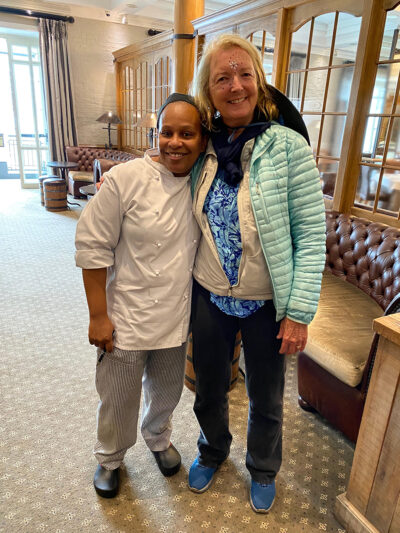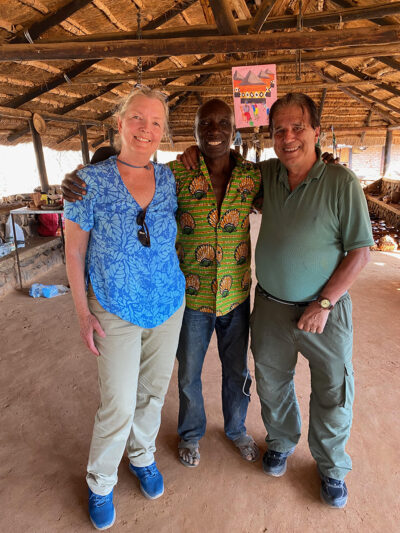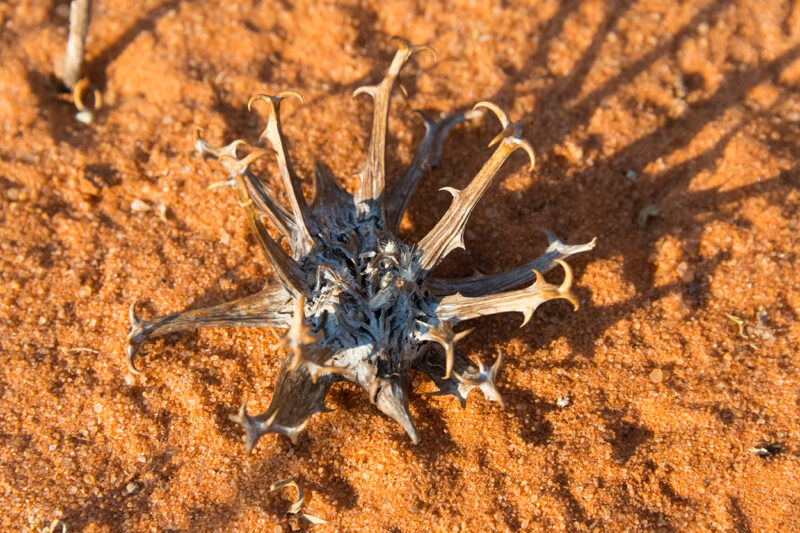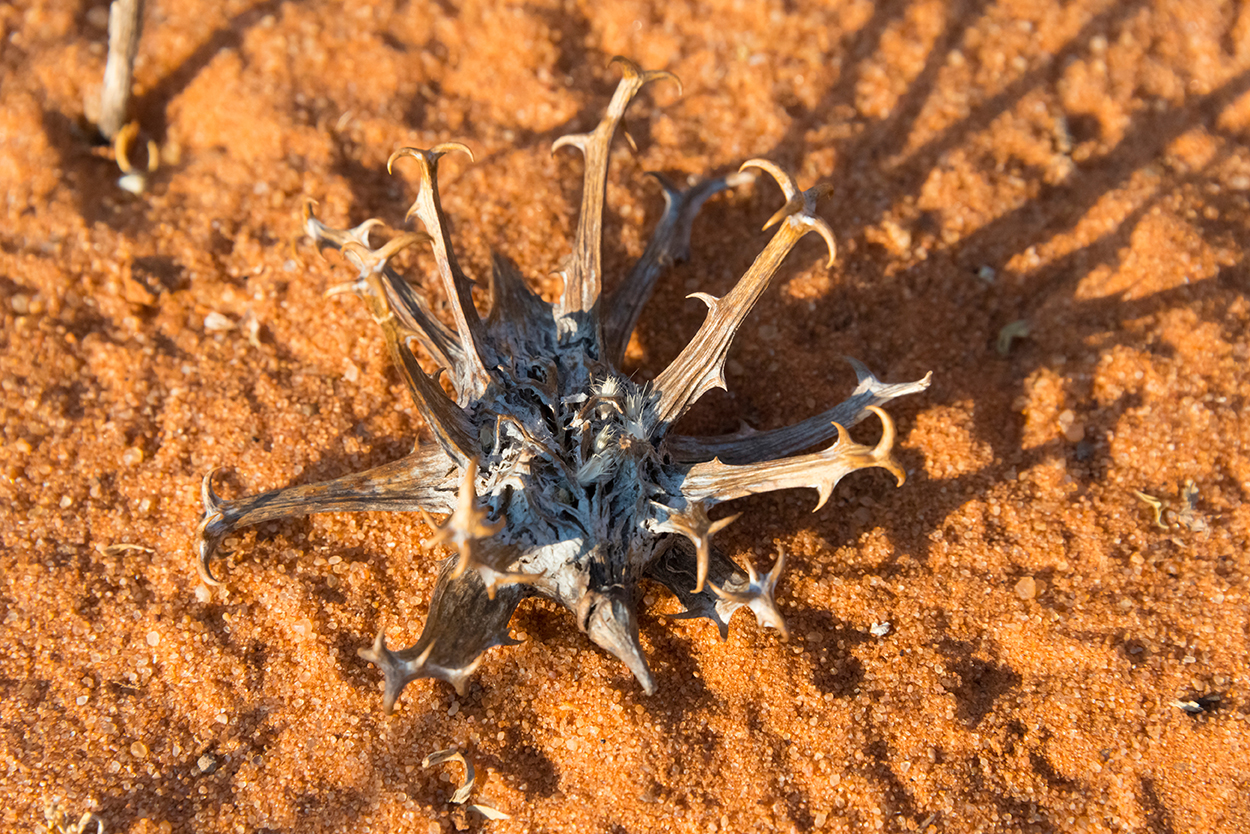The African continent is a treasure trove of medicinal herbs. Recently Lesley and I visited South Africa first as tourists, to experience the vast Kruger National Game Reserve where we had an opportunity to go on several safaris to see the abundance of wild animals including “the big five”: lions, elephants, rhinoceroses, leopards, and the cape buffalo, not to mention hippos, zebras, cheetahs, hyenas, wild dogs and giraffes. These represented just a sampling of the diverse animals, birds, trees and botanicals that occupy the hot, semi-arid climate. Naturally, our interest soon turned to the medicinal herbs and healing practices of the various tribes in the area of which there are many, with different customs and languages. In fact, in Cape Town there may be as many as 11 different languages and the average native resident can usually speak four of more. We were there during the dry period which is between September and October.
Traditional healers there belong to two categories, usually distinct from each other. First, the sangomas, who are mostly women functioning as shamans, who use methods of divining the illness of a patient in relation to their environment and ancestors. Sangomas number in the thousands and learn their craft in special sangoma schools. They display their skills when they “throw the bones” on the ground. These consist of an assortment of bones, shells and other objects. The sangoma we interacted with was 29 years old, unmarried, well-educated, and also a highly qualified chef at the first-class hotel we stayed at in Cape Town.

Lesley Tierra with sangoma and chef Noma.
Sangomas are important in African healing because it is their job to provide both a spiritual and physical diagnosis of the patient. This is done without the patient stating their disease or any reason for their seeking help. It was expected that the sangoma, if they are good, could tell the patient whatever they needed to know regarding their health and well-being. This information was then conveyed to the second category of healer, the herbalist, the inyanga, whose job it is to give the appropriate herbal remedy.
To view all of this in a more familiar context, African healing, like most traditional healing, views a mind-spirit-body cause of disease related to all aspects of their environment including, in the case of African shamanism, the relationship to one’s ancestors. In any case, the intent besides giving remedy is to get the patient to look inward for the healing they need.
In the West, the placebo is recognized as powerful enough that the “American Medical Association considers it ethical to use placebos to enhance healing on their own or with standard medical treatments if the patient agrees to it.” In this light, we might better appreciate how such shamanistic practices have a more than reasonable basis.
Later in Zimbabwe, we spent time interviewing one of the most celebrated inyangas at the place where he and his entire extended family consisting of his wife, sons, daughters, various grandchildren, and guests resided. This was some distance away from where we were staying at Victoria Falls Hotel, along dirt roads and various tribal villages full of thatched dwellings. The inyanga’s name is M’pisi and besides being the most respected herbalist in the area, according to those who knew him, he was also the chief of his tribe.

Inyanga M’pisi with Lesley and Michael Tierra
M’pisi and his family greeted us warmly. A lean man in his early 70s, he was charismatic and animated as he shared his extensive knowledge of herbs over the span of an hour.
He told us of several impressive cures he had for various diseases which contemporary medical science would find difficult to treat. One was curing a person who had been bitten by the deadly venomous Egyptian cobra. He impressed upon us that because of his herbal knowledge (which I assumed was passed down to him from childhood), he was the man to go to for healing.
He also worked with a sangoma, for whom he had a special thatched dwelling. This sangoma, we were told, is especially gifted. Patients are not invited to say what is wrong with them; rather, they write their information on a small piece of paper, carefully fold it and without saying a word, toss it on a small fire. The sangoma would then tell the patient everything he wrote and pass the information on to M’pisi who, if appropriate, would give the herbal remedy. I am under the impression that mostly he would treat patients with one, or maybe more rarely, three or four herbs.
On our visit, M’pisi was most excited to tell us about devil’s claw (Harpagophytum procumbens, H. zeyheri, of the family Pedaliaceae), which he considered to be a near panacea for most diseases. Unlike many other herbs in his daily toolkit, which are not available outside of Africa, devil’s claw is widely available in the West. It is available from the wild and even cultivated in the region we were in, Zimbabwe and Namibia from where it is exported to various distributors in Europe and North America. Devil’s claw is available in various forms, teas, powders, capsules , extracts and tinctures and in bulk from Mountain Rose Herb company.[1]
The name “devil’s claw” is derived from the appearance of its fruits, which are covered with small protuberances that look like claws. It is widely known and used in the US and Europe as a remedy for arthritis, though research has not yet supported this as a specific claim. Other studies, however, has found the plant effective for reducing fever, rheumatism, low back pain and degenerative musculoskeletal disorders.

Devil’s Claw on the desert, Kgalagadi Transfrontier Park, South Africa
Devil’s claw tubers contain three types of glycosides that reduce inflammation and promote healing. Its intensely bitter taste stimulates stomach acid, which helps digestion. The German Commission E recommends devil’s claw for loss of appetite, dyspepsia and to support other therapies treating degenerative disorders of the locomotor system.[2]
M’pisi said that there are two species of devil’s claw but both have similar properties. He uses it as a virtual panacea, making it an easy choice for conditions of various disease that might be revealed by his sangoma. (I might add, however, that M’pisi does give lifestyle and dietary recommendations as well.) I was particularly interested in the dose he uses. At that he called in his wife and asked her to tell us how much devil’s claw she takes daily. Without any hesitation, she said a full tablespoon of devil’s claw powder three times each day. She said she takes it for her lumbago. A tablespoon of the powder is the outer limit dose. The recommended dose is 1.5 to 2 grams three times daily while for arthritis it is 5 to 10 grams. It is not to be taken during pregnancy and because of its intense bitterness, it may stimulate too much stomach acid. So it can be taken as a bitter to improve digestion, but one must determine their own appropriate dose.
M’pisi uses it for backache, rheumatic and arthritic diseases of course, as an anti-inflammatory, antiseptic, antiparasitic, internally and topically to stop bleeding, diarrhea, diabetes, stomach problems, to open veins and arteries for blood circulation, and cancer. It also moves blood and while it’s not taken during pregnancy it can be taken to help childbirth. It can be inserted vaginally for vaginal cancer as a bolus or suppository.
In conclusion, devil’s claw is perhaps one of the most valuable of some 40,000 to 45,000 medicinal plant species that have the potential for development out of which 5,000 species are now used medicinally. Africa is located within a hostile subtropical climate and it is a known fact that under such stress, plants develop valuable secondary metabolites through evolution that allow them to survive in such a harsh environment.
Still further, because of tropical conditions, Africa is subjected to a lot of strong ultraviolet rays form the sun which promote numerous pathogenic microbes, including several species of bacteria, fungi, and viruses. This offers the possibility that African plants can develop and accumulate more chemopreventive substances than plants grown north of the equator. [3]
It is stated that approximately a third of all tropical plants in Africa are on the verge of extinction. As with all major continents this is mostly due to loss of habitat where forests are cut down and the land is either given over to urban development or agriculture. With responsible and thoughtful governmental top-down intervention, it will be possible to preserve areas of biodiversity for further evolution. At this time, based on official government papers that M’pisi gave to me, devil’s claw is being cultivated by natives in its environment. Rather than only restrict ourselves to more popular herbs or ban the use of certain herbs altogether, another way is to encourage and support indigenous people by more often using less familiar herbs for our culinary and healing needs.
Reference: https://www.herbalgram.org/resources/herbalgram/issues/118/table-of-contents/hg118-herbprofile-devilsclaw/
[2] https://bit.ly/3Tal8lZ
[3] Abegaz BM, Ngadjui BT, Folefoc GN, et al. Prenylated flavonoids, monoterpenoid furanocoumarins and other constituents from the twigs of Dorstenia elliptica (Moraceae) Phytochemistry. 2004;65(2):221–226. [PubMed] [Google Scholar]

